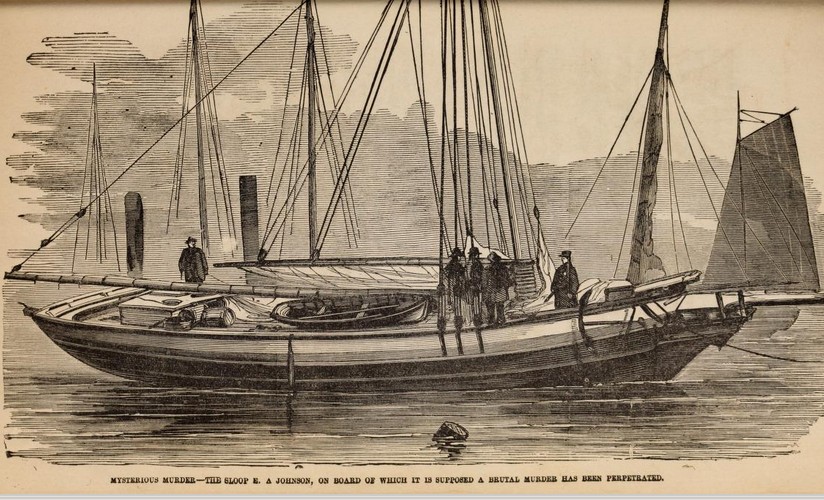|
Albert W. Hicks
Albert W. Hicks (c. 1820 – July 13, 1860), also known as Elias W. Hicks, William Johnson, John Hicks, and Pirate Hicks, was a triple murderer and one of the last people executed for piracy in the United States. Cultural historian Rich Cohen places him as the first New York City legendary gangster figure, a bridge between the piracy of old and the rise of a new "gangster nation". Biography According to Hicks' testimony, he was born around 1820 in Foster, Rhode Island. His father was a farmer who had seven sons, of whom Hicks was the second youngest. He was known to be headstrong and a fighter. He never attended school and worked on the farm until age 15 when he ran away to Norwich, Connecticut, where he began a life of crime. Arrested for theft, he was put into jail. Biographer Rich Cohen suggests it wouldn't have been uncommon for a teenage runaway to be "buggered" by older inmates. Hicks escaped a number of times but he was re-apprehended and given increasingly severe sente ... [...More Info...] [...Related Items...] OR: [Wikipedia] [Google] [Baidu] |
Foster, Rhode Island
Foster is a town in Providence County, Rhode Island, in the United States. The population was 4,469 at the 2020 census. History Foster was originally settled in the 17th century by British colonists as a farming community. In the year 1662, William Vaughan, Zachariah Rhodes, and Robert Wescott, purchased from the Indians a large tract of land called West Quanaug, bordering on Providence. The 'West Quanaug purchase' included nearly the whole southern half of the town of Foster. The first English settler was allegedly Ezekiel Hopkins. Many settlers from Newport were active in the town in the 18th century. Shortly before the incorporation of the town, Foster's first church, a Calvinist Baptist congregation was founded. Shortly afterwards, Six Principle Baptist and Free Will Baptist congregations were founded. Foster was incorporated with Scituate, Rhode Island in 1730, forming the western section of that township, and remained part of Scituate until 1781, when it was split off ... [...More Info...] [...Related Items...] OR: [Wikipedia] [Google] [Baidu] |
